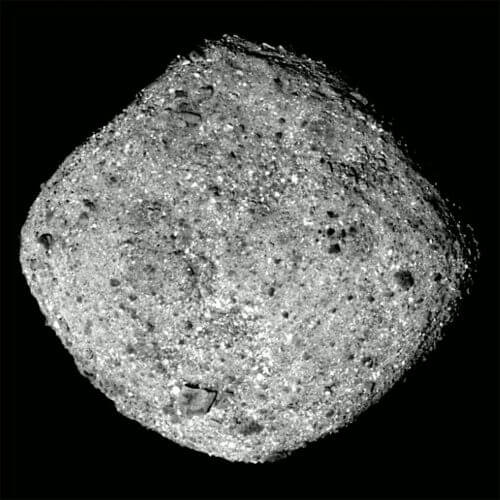OSIRIS-Rex will soon begin an initial survey of the asteroid. It will then circle it in a close orbit and finally touch the ground, collect a sample and bring it to Earth

The OSIRIS-Rex spacecraft completed a journey of 2 billion km to reach the asteroid 'Bennu'. On Monday of this week, the spacecraft performed a maneuver that brought it into the coffee orbit around the asteroid.
OSIRIS-Rex will soon begin an initial survey of the asteroid. The spacecraft will first circle the asteroid near its north pole, then the equatorial region and finally the south pole from a height of about 7 km above the asteroid's surface.
The main scientific goals of this review are to refine the estimates of the asteroid's mass and its rotation rate and to create a more accurate model of its shape. The data will assist in locating potential sites for later sample collection.
The OSIRIS-Rex mission will help scientists understand how the planets formed and how life began, as well as improve our understanding of asteroids that could hit Earth. Asteroids are remnants of the building blocks that formed the planets and made life possible. Asteroids such as ours contain natural resources, such as water, organic materials and metals. Future space exploration and economic development may rely on asteroids to mine these materials.
"As researchers at NASA, we have never shied away from the most extreme challenges in our solar system in search of information," said Laurie Glaze, acting director of NASA's Planetary Sciences Division. "Now we are working on it again with our partners in the US and Canada to carry out the complicated task of returning part of the early solar system to Earth."
The mission's navigation team will use Benno's initial overview to practice the delicate task of navigating around the asteroid. The spacecraft will enter orbit around Bennu ('Bennu') on December 31, and in doing so it will set a record as 'Bennu' is the smallest object ever orbited by the spacecraft, at a total diameter of 490 meters. This is a critical step in OSIRIS-Rex's journey towards years of collecting, and eventually bringing to Earth, about 60 grams of 'Beno' regolith soil.
Beginning in October, OSIRIS-Rex performed a series of braking maneuvers to slow the spacecraft down to an orbit that would allow it to perform the initial survey.
"The OSIRIS-Rex team is proud to cross off the list another important milestone - reaching an asteroid," said Dante Loretta, principal investigator at the University of Arizona, Tucson. "Preliminary data from the access phase show the bone has an extraordinary scientific value, we have been preparing for this moment for years, and we are ready."
The OSIRIS-Rex mission will be the first US mission to bring samples from an asteroid to Earth. It will also be the largest sample returned from space since the Apollo era. It is also the first to explore a primitive B-type asteroid, which is an asteroid rich in carbon and organic molecules that make up life on Earth. It is also the first mission to study a potentially hazardous asteroid and try to determine the factors that change their orbits and bring them closer to Earth.
"During our flyby toward 'Beno,' we took images at a much higher resolution than was available from Earth," said Rich Burns, OSIRIS-Rex project manager at NASA's Goddard Space Flight Center in Greenbelt, Maryland. "These observations revealed an asteroid that is in line with our expectations from ground measurements and a particularly interesting small world, and now we are setting out to experience our spacecraft on such a small body."
When OSIRIS-Rex begins its orbit at the end of the month, it will come within 1.25 km of its surface. In February 2019, the spacecraft will begin mapping Beno to determine the best site for sample collection. After choosing the collection site, the spacecraft will land and stay for a short time on the surface of 'Benu' to sample soil. OSIRIS-Rex is scheduled to return the sample to Earth in September 2023.
More of the topic in Hayadan:
